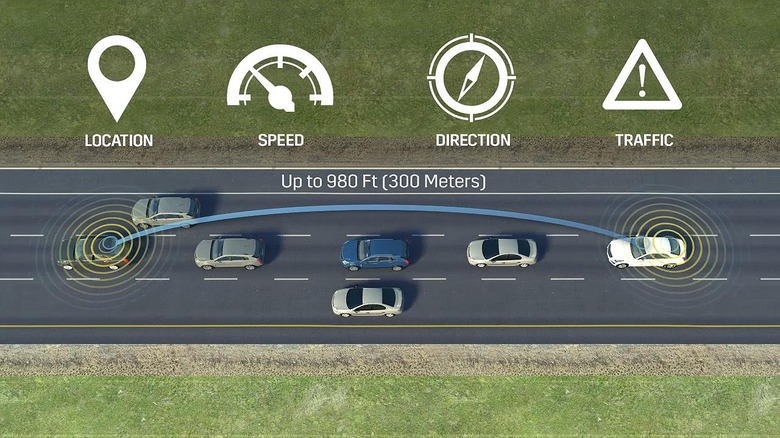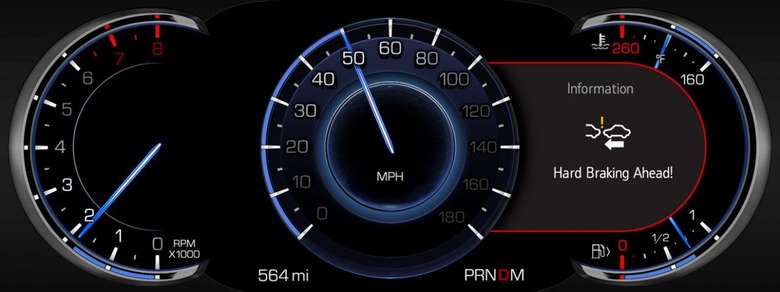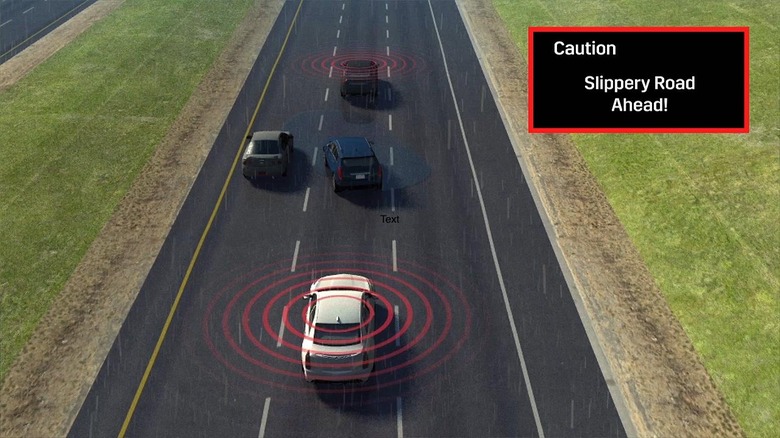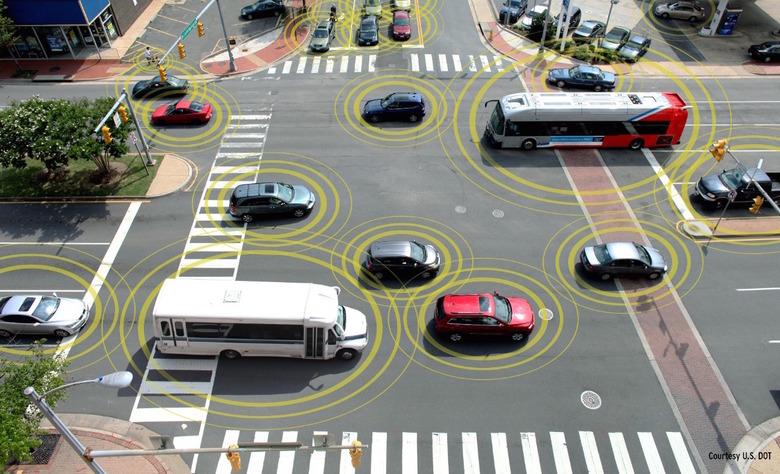Inside Cadillac's early bet on Vehicle-to-Vehicle tech
Until now, the only way one car could communicate with another was if the driver leaned on the horn or made imaginative hand-signals to their fellow motorists. With the arrival of the 2017 Cadillac CTS, though, all of a sudden the vehicle itself gets chatty. Making V2V, or Vehicle-to-Vehicle, communication a standard feature, it promises not only an increase in on-road safety but to pave the way to new semi-autonomous and self-driving features. The big question is, with Vehicle-to... well, anything still in its infancy, why is Cadillac making the jump now?
There's obviously marketing mileage to be had in being the first in the US auto industry to do something. Still, making a commitment now meant placing some bets on the future. There are several different approaches to V2V using very different technologies for both intercommunication and network topography. Some companies, like Qualcomm, are looking to 5G for cellular-based standards; some, like HERE, advocate a centralized cloud into which all connected vehicles feed their data and are served up information in return.
Cadillac made two architectural commitments. The first is to use the 5.9 GHz spectrum that the US Federal Communications Commission (FCC) has set aside for connected cars. The second is ad-hoc networking, where each so-equipped vehicle creates a temporary link with another when they come into range.

Given the state of V2V in the real-world right now, those are understandable decisions. Opting for Dedicated Short-Range Communications (DSRC) instead of a cloud- or infrastructure-based system offers a workaround to the fact that, right now, neither of those are in place. Many municipalities are looking ahead to "smart cities" populated with connected lights, traffic signals, and road signs, – not least because they'll likely be essential as self-driving cars proliferate – but with the exception of a few limited pilots it's all still on paper.
"We didn't want to have to wait until all of that stuff ended up being available," Steve Martin, Cadillac's assistant manager of product & technology communications, explained to me. "We wanted to break into the space now, and give our customers this out-of-the-box, ready-to-use DSRC system they can use, if they want. Standard on their CTS, and it will talk to other CTS."
That conversation has a 980 feet range, and is capable of handling 1,000 messages per minute. There's a theoretical limit of around 100 cars, Matthew Kirsch, lead engineering group manager for automated driving and active safety at Cadillac, told me, though in practice the system prioritizes what information it sends out and what gets filtered through to the driver.

"Each car that's equipped with the technology is reporting the basic information for that vehicle," Kirsch says. "Its GPS location, its speed, and its direction. Every car is reporting that same information. As that host vehicle comes down the road, it's receiving any information that comes within range."
The so-called "host vehicle" – the car you yourself are driving – is responsible for deciding what's important, both to share and to push up to the display on the CTS' dashboard. That might be down to the severity of an event "based on the priority of that particular hazard," Kirsch suggests, "if there's multiple cars reporting, say, an anti-lock brake event." However, it's also clever enough to filter out irrelevant data, even if it's occurring nearby.
If a car in traffic behind the host vehicle has an engine failure, for instance, that won't get flagged to the driver as it has no impact on their trip. Similarly, news of cars dramatically slowing in the opposing lane on the highway probably won't make it to the dashboard. "The host vehicle is what decides whether or not to provide that alert," Kirsch says.
With recent chatter of the CIA hacking cars and long-standing concerns that connected vehicles could provide another way for bad agents to wreak havoc, Cadillac has also placed security high on the agenda, not to mention privacy. Information the V2V system shares from one car to another isn't stored, only used and then discarded; it can't be retrieved later on to identify the vehicle, its driver, or any other occupants. Security credentials baked into the system at the point of manufacture work to authenticate each vehicle to its counterparts on the road, so that one CTS knows that it's definitely talking to another.
"If somebody really wanted to cause trouble" by sending out targeted messages with nefarious intent, I was told, "they'd actually have to crash their vehicle."

Of course, even if you have a refreshed 2017 CTS with V2V onboard, seeing a notification on your dashboard is still likely to be a fairly rare event. Factor in the limited number of such cars on the road, the fact that the system is currently designed to surface only safety warnings to the driver, and the filtering going on, and it's questionable as to how visibly active the whole thing will be to the person behind the wheel. For now, Cadillac is taking the roll-out slow.
The automaker wouldn't be drawn on what vehicles might be next in line to get the technology. As well as the 5.9 GHz radio, the V2V system gets its own ECU and other control units on the car; it also requires the "next generation Cadillac user-experience" that also debuts on the refreshed CTS, and which is set to come to the 2018 XTS and ATS sedans next. "We think we've done this in a fairly efficient way," Kirsch says, but it's not as straightforward as just dropping a single black box in under the hood. That means those with a current CTS – or, indeed, any other car from Cadillac's line-up – are also out of luck.
"There's no plan to offer some kind of kit or package to retrofit or update older vehicles," Chris Bonelli, communications coordinator for global advanced technology communications at Cadillac, tells me. "Looking forward, depending on how the technology goes and what regulations are approved at the time, we could offer it on more cars or compatibility with other manufacturers."
That will require those other manufacturers to be onboard with DSRC, too, though Cadillac's team is confident its platform-of-choice will be the long-term winner. "In the future, we think that the Dedicated Short-Range Communications protocol is the right approach for this," Bonelli says. "We think overall it has the most advantage. If other vehicles were similarly equipped with that sort of signal, it's possible they could communicate."

It'll come down to standards, both of the language connected cars speak and the ways by which they do that. In the US, the National Highway Traffic Safety Administration (NHTSA) is bullish on V2V – it estimates it could "eliminate or mitigate the severity of up to 80 percent of non-impaired crashes, including crashes at intersections or while changing lanes" – but there's still no industry-wide standard, and any requirement of automakers to embrace the technology isn't expected until 2020 at the earliest. For now, I'm told, Cadillac is open to collaboration but content to go it alone if necessary.
"It will be great if other manufacturers jump onboard and use this same technology to allow their vehicles to talk to each other," Cadillac's Martin concluded. "It'll be great when all of these things converge in the future. But it has to start somewhere."
